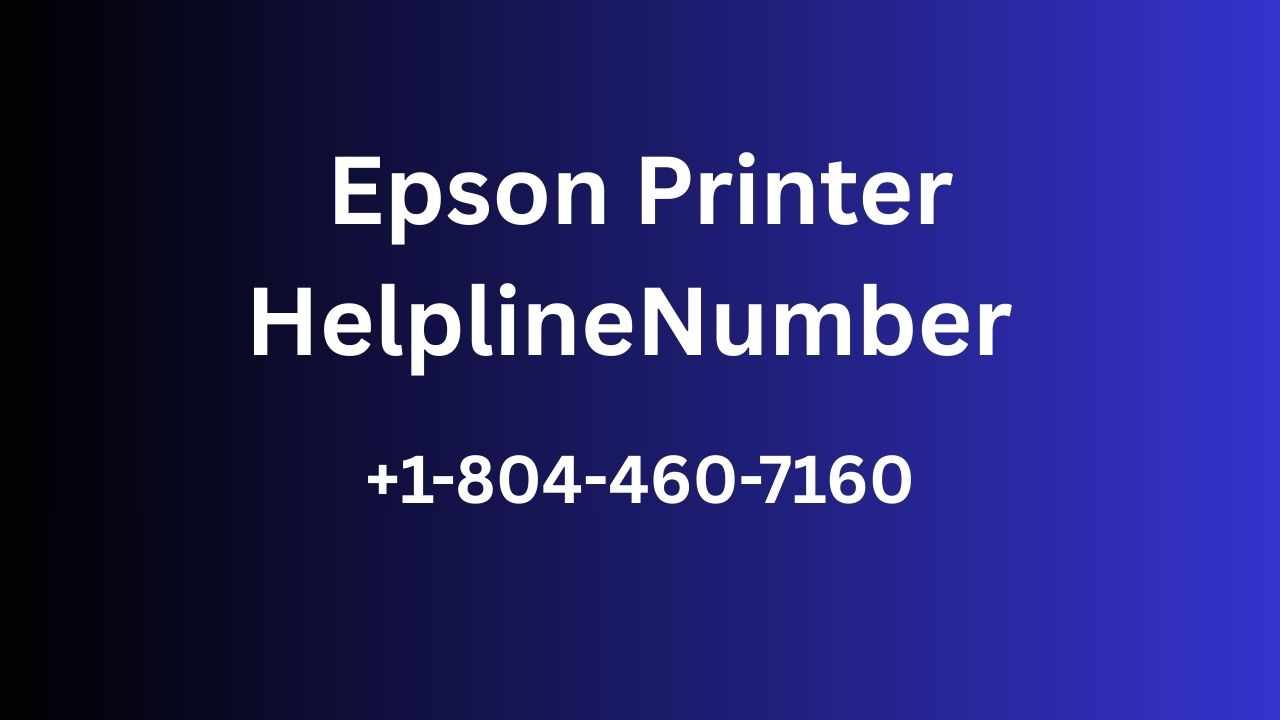
Epson printers are popular for their excellent print quality, durability, and advanced features. However, to get started with your Epson printer, the first step is connecting it to your computer. Whether you’re using a USB cable or setting up a wireless connection, the process is simple when done correctly. This guide will walk you through the step-by-step process of connecting an Epson printer to your computer (Call USA/CA: +1-804-460-7160) and provide solutions for common issues you may face during setup.

Click Here
Preparing Your Printer and Computer
Before you begin the connection process, make sure your Epson printer is properly unboxed and set up. Plug in the power cable and turn on the printer. Install the ink cartridges and load plain paper in the tray. On your computer, check that it has an active internet connection, which is essential if you plan to download the latest drivers from Epson’s website (Call USA/CA: +1-804-460-7160) .
Connecting via USB Cable
The simplest way to connect an Epson printer to your computer (Call USA/CA: +1-804-460-7160) is with a USB cable. Most Epson printers support this method. Plug one end of the USB cable into the printer and the other end into an available USB port on your computer. Once connected, your computer should automatically detect the printer and attempt to install the required drivers. If the drivers are not automatically installed, you can manually download them from the official Epson support website by entering your printer model and selecting your operating system. Run the driver installer and follow the on-screen instructions to complete the setup. After installation, your printer should be ready to use.
Connecting via WiFi Network
If you prefer wireless printing, you can connect your Epson printer to your computer (Call USA/CA: +1-804-460-7160) using WiFi. Start by turning on your printer and pressing the WiFi button until the light flashes. On your computer, open the network settings and ensure that your computer is connected to the same WiFi network you want your printer to join. From the Epson printer’s control panel, select the WiFi setup option and choose your network from the list. Enter the WiFi password if prompted. Once the printer is connected, download and install the Epson printer drivers on your computer. During installation, select the wireless connection option and follow the instructions to pair your computer with the printer.
Connecting via WiFi Direct
Some Epson models come with WiFi Direct, which allows you to connect the printer directly to your computer without a router. Enable WiFi Direct on your printer by pressing the WiFi Direct button or selecting it from the control panel menu. Your printer will display a network name (SSID) and password. On your computer, go to the WiFi settings, find the printer’s network, and connect using the password provided. Once connected, install the Epson driver software and choose WiFi Direct as the connection method. This option is helpful when a WiFi router is not available.
Installing Epson Drivers and Utilities
Regardless of the connection method, installing the correct Epson printer drivers is essential. Go to the official Epson support website, enter your printer model, and download the driver package that matches your operating system. Along with drivers, Epson also provides utilities such as Epson ScanSmart and Epson Printer Utility, which enhance your printing and scanning experience. Running the installation wizard ensures that your printer is configured correctly and ready for use.
Setting Epson Printer as Default
After connecting your Epson printer, make sure it is set as the default printer on your computer. On Windows, go to Control Panel, open Devices and Printers, right-click your Epson printer, and select “Set as default printer.” On macOS, open System Preferences, go to Printers & Scanners, and select your Epson printer as the default option. Setting the printer as default ensures that all print commands are directed to it automatically.
Troubleshooting Connection Issues
Sometimes, even after following the steps, your Epson printer may not connect properly to your computer. If this happens, there are a few troubleshooting steps you can take. Restart both the printer and the computer to refresh the connection. Make sure the USB cable is securely connected or that the printer and computer are on the same WiFi network. Update your operating system, as outdated systems may have compatibility issues. If the printer still does not connect, uninstall the driver software and reinstall it from the Epson support website.
Using Epson Software Updater
Epson provides a handy tool called Epson Software Updater, which automatically checks for and installs the latest drivers and firmware updates. Installing this tool helps keep your printer updated and prevents many connection-related problems. Running it regularly ensures you have access to the latest features and bug fixes.
Testing Your Epson Printer Connection
After completing the setup, it is important to test the connection. Open a document on your computer and try printing a test page. If the document prints successfully, your Epson printer is properly connected. You can also access the printer properties to check ink levels, paper settings, and print quality options.
Conclusion
Connecting an Epson printer to your computer (Call USA/CA: +1-804-460-7160) is a straightforward process whether you use a USB cable, WiFi network, or WiFi Direct. The key to a successful connection lies in ensuring that the printer drivers are properly installed and that both devices are on the same network when using wireless methods. By following the step-by-step guide outlined above, you can easily connect your Epson printer and enjoy smooth, high-quality printing. Regularly updating drivers and using Epson utilities will further enhance performance and minimize the risk of errors. With the right setup, your Epson printer will become a reliable companion for all your printing tasks.




















Write a comment ...